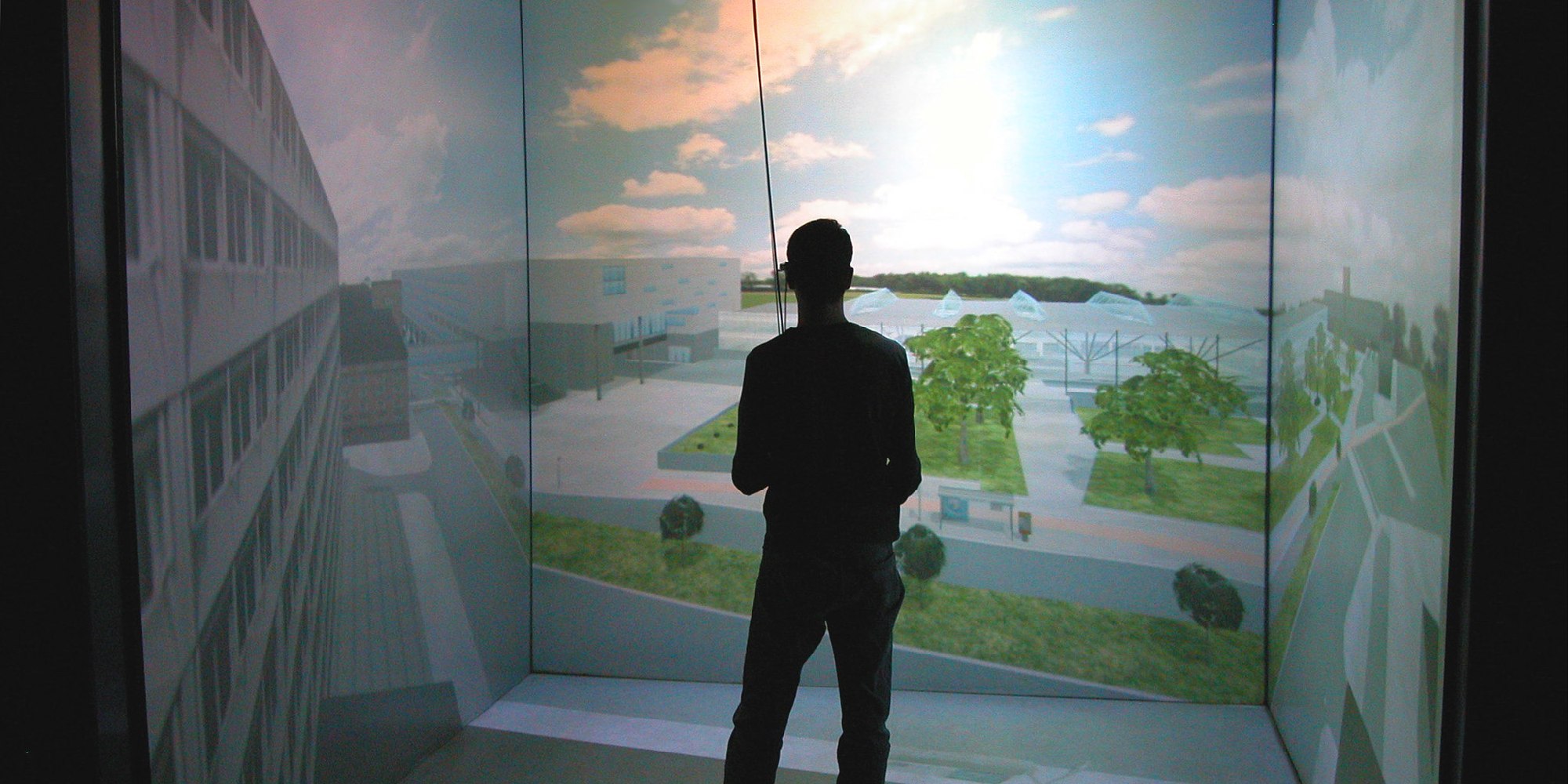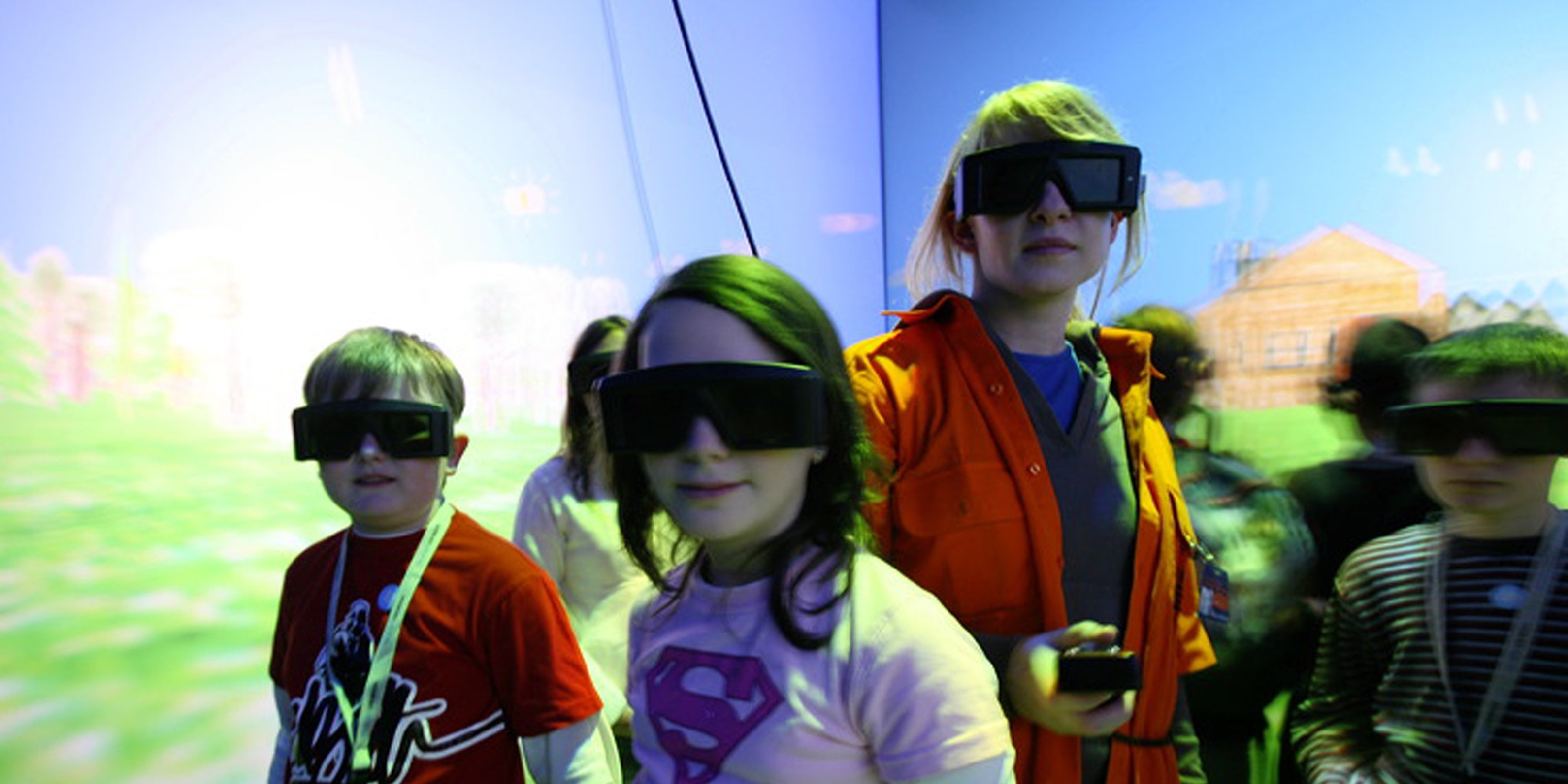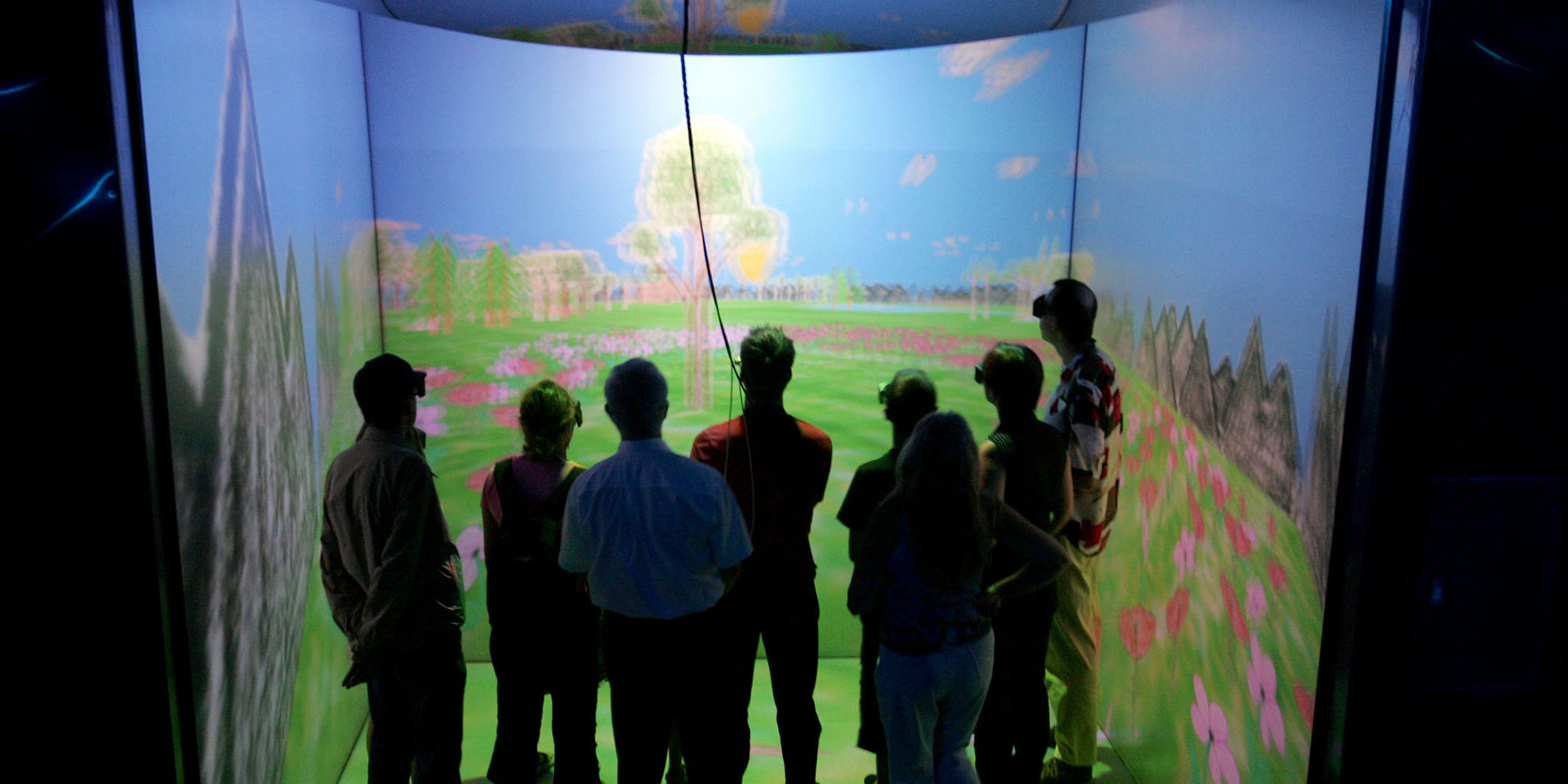In 1996, the Ars Electronica Futurelab set up the world’s first publicly accessible CAVE at the Ars Electronica Center in Linz. This was the first time that a wide audience had access to virtual illusions of reality: not as mere spectators, but with the opportunity to immerse themselves in the projected world and interact with the environment.
The CAVE (acronym for “Cave Automatic Virtual Environment”) was an immersive virtual reality installation with 3D-projections on three sides plus the floor of a cube with 3 meters on each side. It had been developed by a team around the American artist and researcher Dan Sandin and the American computer graphics pioneer Thomas A. DeFanti, directors of the Electronic Visualization Laboratory (EVL) of the University of Illinois at Chicago. So far, the CAVE had found use inside academic institutions and for industrial development.
It was actually a double “coup” to install this first CAVE outside of the US at the Ars Electronica Center in Linz. The CAVE at the Center would be the first to be continuously open to the public and to be used by media artists and artist-developer teams.
All in all, around 50 applications and virtual worlds were presented at the CAVE during its time of operation at the Ars Electronica Center between 1996 and 2008. Amongst these were the artistic projects “World Skin” by French new media artist Maurice Benayoun and “CAVE project” by Austrian multimedia artist Peter Kogler. The Futurelab team developed, among others, the simulation of turbine flows for MCE, a subsidiary company of voestalpine, the Linz steelworks.
In 2009, with the redesign of the Ars Electronica Center, the CAVE was succeeded by a new virtual reality highlight for the public: the first Deep Space – also developed by the Ars Electronica Futurelab – with a 16×9 meter wall and floor projection was opened.

The Language of Virtual Realities
In a virtual world, we can simulate truths that would be unimaginable in real life, explore incredible activities, and collaborate with others in a way that goes beyond physical interaction.
Credits
Development of the CAVE Infrastructure: Electronic Visualization Laboratory (EVL)



